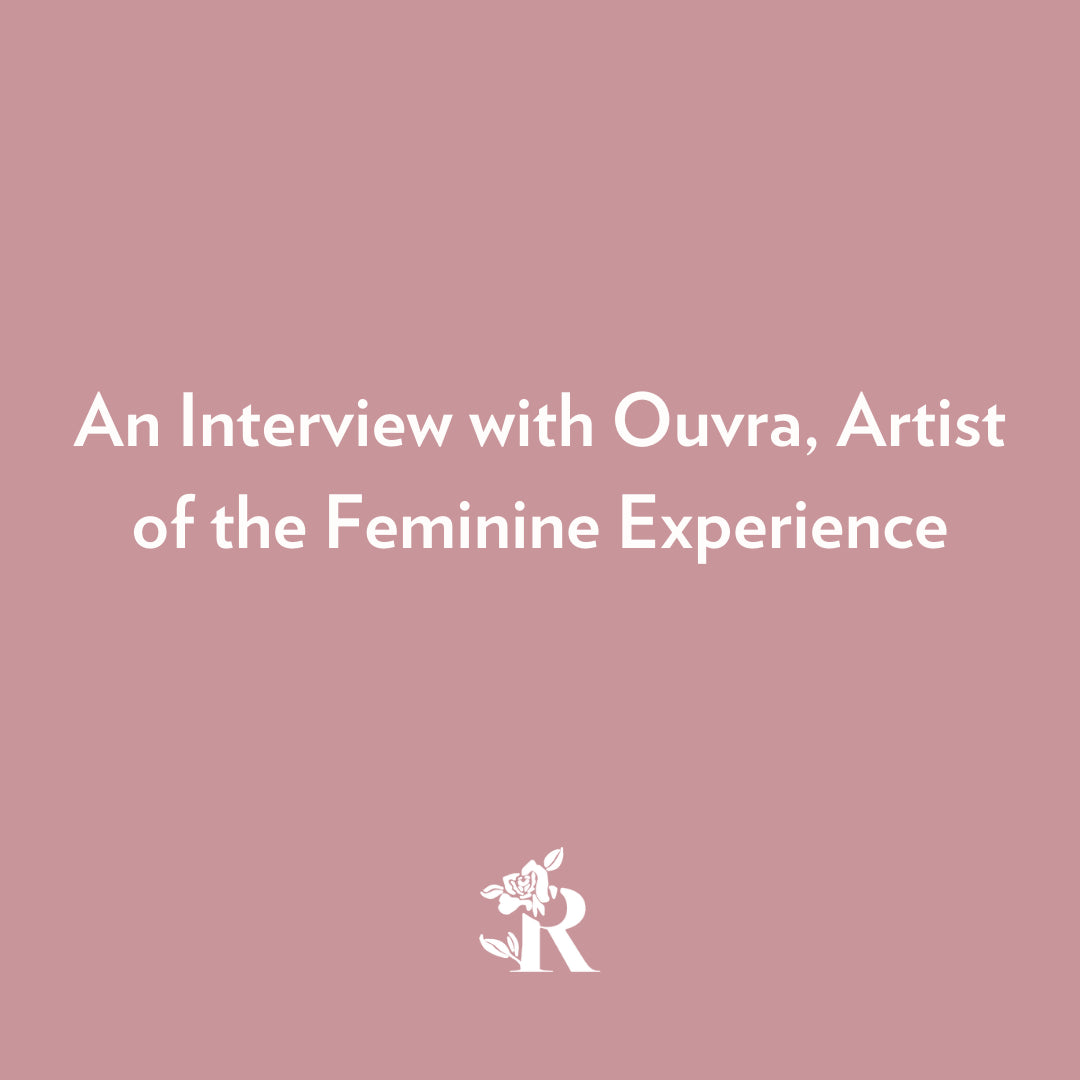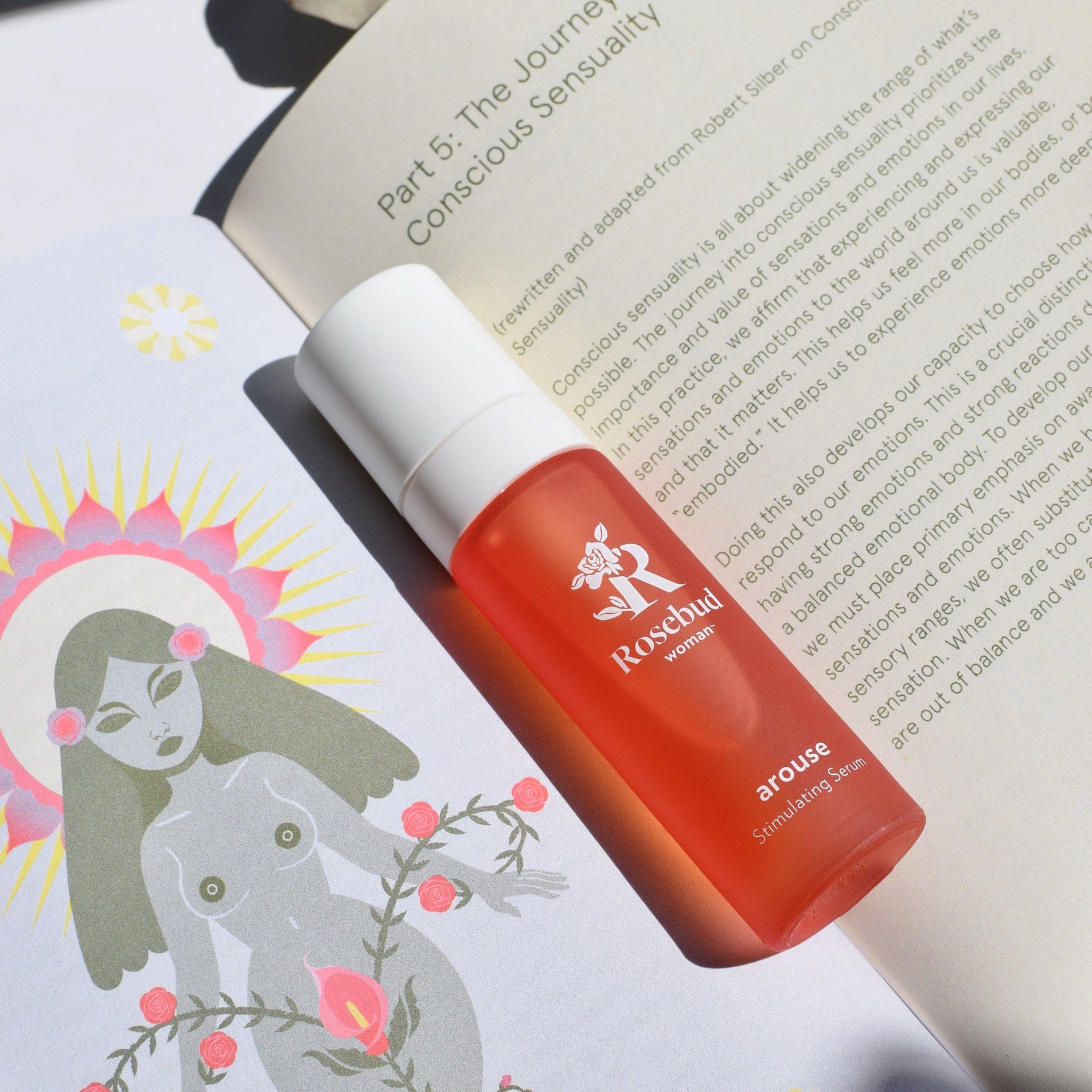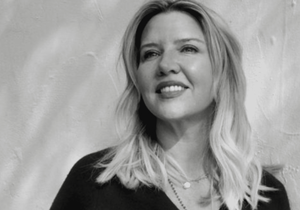An Interview with Ouvra, Artist of the Feminine Experience
Rosebud Woman is thrilled to announce the publication of our first book, The Invitation: Daily Love for Your Intimate Self. Created as a companion volume for our line of intimate feminine skincare products, The Invitation explores the many facets of a woman’s biology, body, cycles, and spirit. The Invitation is gorgeously illustrated by the Romanian-Hungarian artist Ouvra, who currently makes her home in Melbourne, Australia. Through her work, Ouvra explores her own feminine experience, as well as the shared archetypal memories, intuitive power, and spiritual anatomy of women. We spoke with Ouvra about her life, work, and vision of the sacred feminine.
Rosebud Woman: Where did you grow up, and were there strong feminine role models around you?
Ouvra: I’m a Transylvanian-born Romanian-Hungarian who spent my childhood in the tropics of Queensland, Australia. As a child I was always aware that I was not a ‘native’.
The strongest feminine figure around me, as with most females, was my mother. She adapted to her surroundings but kept a piece of her motherland in her heart. When she spoke about it her eyes glimmered like a curious jewel. I think from an early age she taught me, without meaning to, that women house worlds of wonder within, and that these worlds are a great source of power.
RW - What do you see as the creative mission of your work?
Ouvra: Without meaning to sound pretentious, I don’t believe that any ‘real’ artist has a mission. You create because you do not have a choice, and usually because you are rubbish at most other things. I think when you try to force a message it can and will lead you to places that are not in harmony with your spirit, where some fool’s gold may be waiting for you. Right now I simply listen and do. I actually have huge lists of creative projects to undertake, but these never come to fruition in order, because what is meant to manifest will always make its way to the top of the pile. This is my own kind of intuitive process.
As a graphic designer, I have my own ethical standards. I only take on jobs that are in harmony with my aesthetic, and that I feel I can bring justice and life to. I have rejected a number of commissions and opportunities due to my own personal ethical standards.

RW: Can you trace back to a source for your fascination with imagery of the divine feminine?
Ouvra: I would have to say that religious iconography, primarily the Mother Mary, was very influential. I was named after my grandmother and great aunty, and my real name—Maria Rozalia Finna— unintentionally translates to ‘Pretty Mother Mary’. As a child we would celebrate our ‘name days’ which is a Romanian tradition, and I shared mine with the Mother Mary. Although I am not religious I do adore the celestial imagery and divine incarnation of the goddess through the Mother Mary. I’m also fascinated by the resemblance of the vulva to her hooded figure with outstretched arms, and I’ve done a number of artworks highlighting this resemblance over the years.
RW: What did you gain from the experience of illustrating The Invitation?
Ouvra: The book is so in line with my eco-sexual aesthetic and celebration of femininity that it was a real pleasure to create. I think Christine was exceptionally tuned-in in regards to choosing the right artist for her publication. I think more than anything it made me happy that I could be creatively true to myself and my client at the same time. That’s a wonderful thing, a gift.
empower yourself
RW: It is unusual to see images of the female genitalia and pelvic area that are neither clinical nor erotic/pornographic. It almost seems you’ve created a new genre of feminine art. How would you describe the style of your work in conversation?
Ouvra: What I normally say in conversation is that “I express female sensuality without exploiting female sexuality”.
I take no issue with women who do ‘exploit’ their sexuality. But I feel that there are so many avenues for women to do that already, I’d like to provide another path for girls and women to express their femininity—a path that makes them feel empowered and liberated without feeling compromised. I’d also love for women to take their feminine power away from the control of men. And to own, honor, and worship it.
Female sexuality transcends the physical form. We’re heavenly creatures. Our physical sensitivities are our strengths. They enhance our sexual experiences, and tune us into a higher spiritual frequency and experience through our inherent intuition.
For me nature is a woman, a goddess. I can see her birthing all around me at every second if I look. This is how I experience my femininity in a spiritual way, and I like to spiritually celebrate nature’s eco-sexuality though my art.
RW: What question do you wish I had asked you?
Ouvra: I wish you had asked, “How do you feel about male artists representing and exploiting the female form?”
I don’t dig it. I feel it’s not their place to speak for our experiences or to make money from exploiting our bodies through art. It’s been a long, hard road for women to take back ownership of the depiction of their bodies and experiences, and now that our voices are finally being heard, there are some male artists who are profiting from this. I think men should try to depict male sexuality in a positive way, rather than profiting from the female experience—which they have no honest understanding of. For example, there is more than one function to the female sexual organ, and it’s not all ‘sexy’. I highly doubt that any of these male artists can truly appreciate the phases and stages that a woman goes through as her body develops and changes over time.
It would be nice if women could tell their own stories, without men demanding access to our most intimate spaces, and exploiting and profiting from those spaces.
























